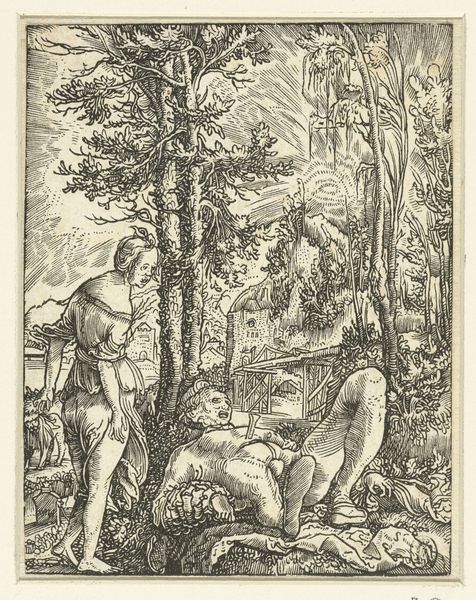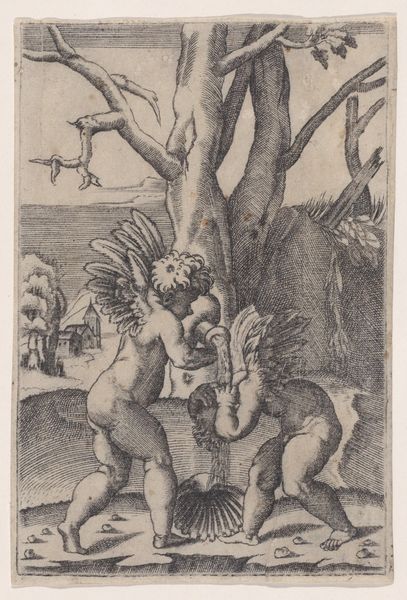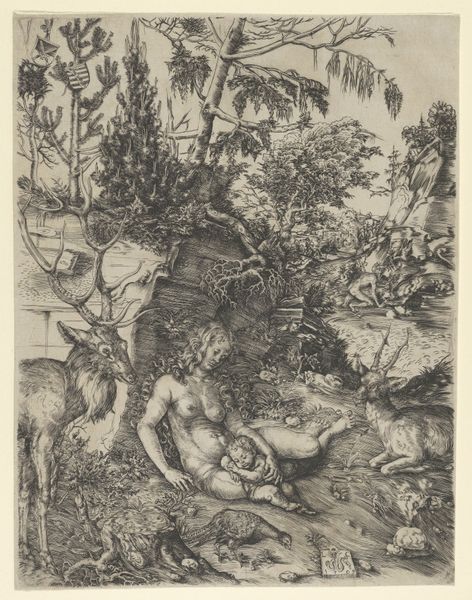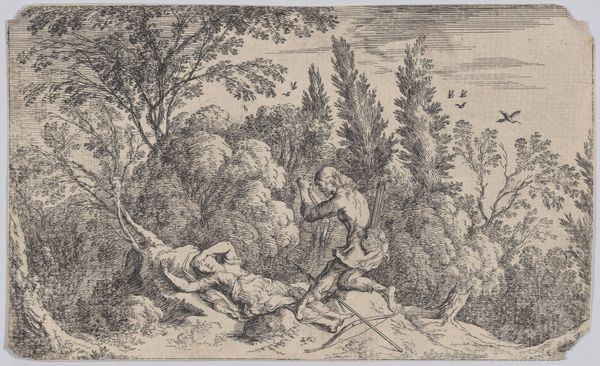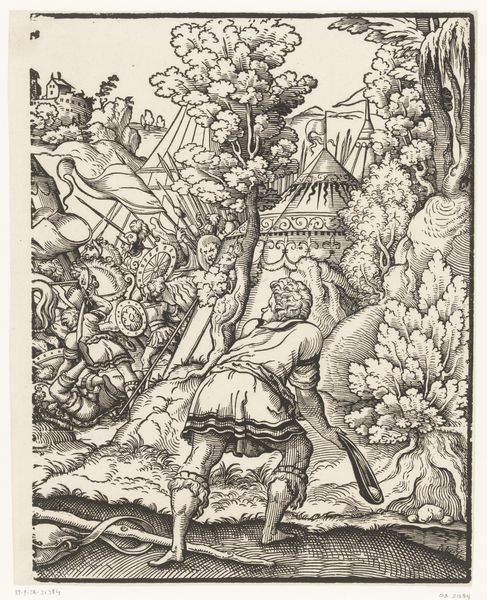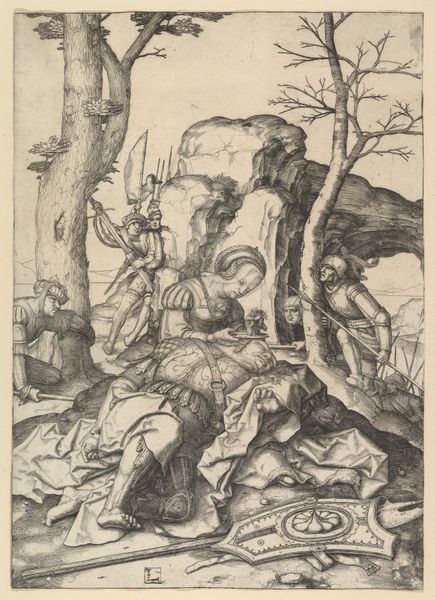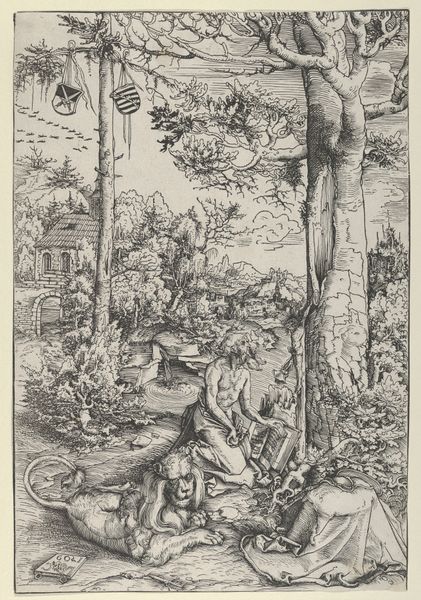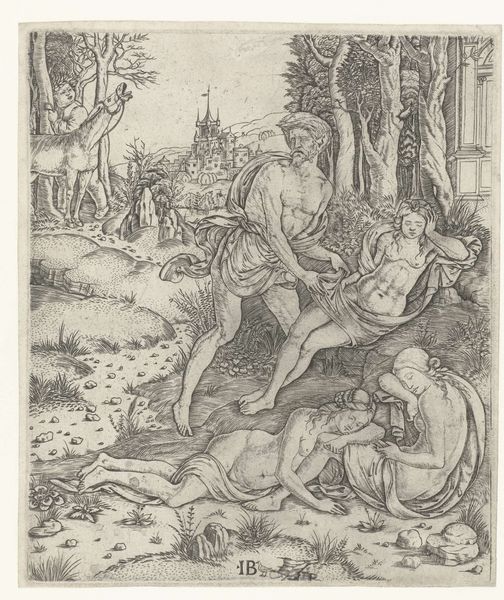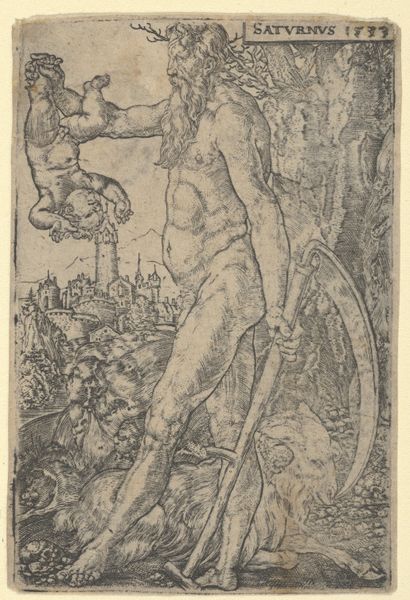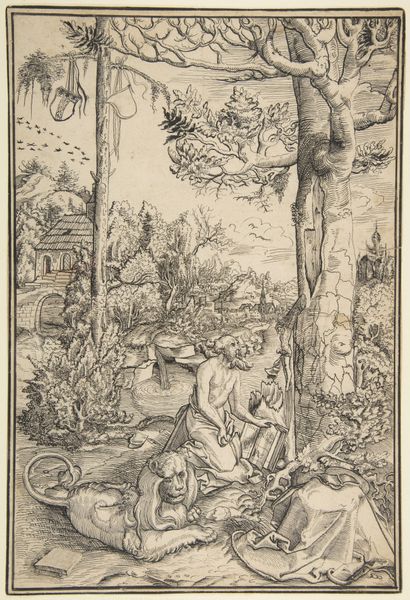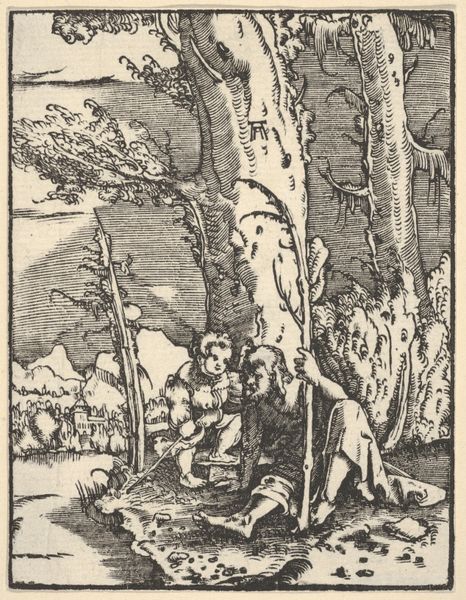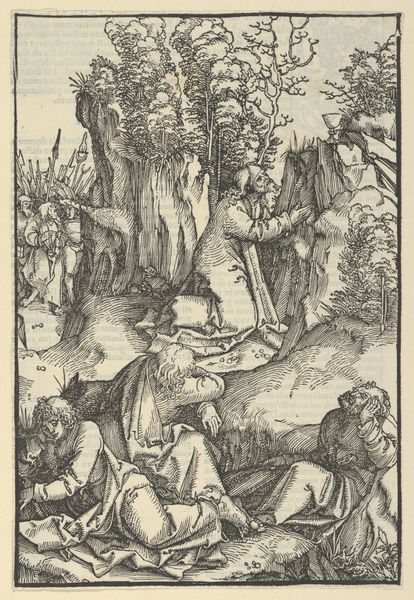
Amor en twee putti of kinderen dragen beeld van putti met gevleugeld anker op sokkel Possibly 1506 - 1539
0:00
0:00
marcantonioraimondi
Rijksmuseum
engraving
#
landscape
#
figuration
#
mythology
#
italian-renaissance
#
engraving
Dimensions: height 212 mm, width 185 mm
Copyright: Rijks Museum: Open Domain
Editor: So this is "Amor en twee putti of kinderen dragen beeld van putti met gevleugeld anker op sokkel," possibly from 1506-1539 by Marcantonio Raimondi. It's an engraving housed here at the Rijksmuseum. I'm struck by the kind of playful activity happening in this mythological scene – a group of putti seemingly struggling to carry a statue. What social contexts shaped such depictions of cherubic figures during the Renaissance? Curator: It's a fascinating piece for considering the evolving role of classical mythology in Renaissance society. Consider the location - the Rijksmuseum, placing it in a canon of Dutch masters, yet it’s deeply Italianate in style and subject. Raimondi helped spread the Italian Renaissance style through prints like this one. Think about the patrons: why would they want images like this circulated? Editor: Perhaps for decoration? Did it hold a symbolic value? Curator: Exactly. Consider the symbolism and its purpose. These putti, or cherubs, represent divine love and are associated with Venus, but how does the artist depict them? Are they idealized figures or are they portrayed as realistically struggling children? What statement is Raimondi making through the engraving process itself – about the accessibility of art or its place in Renaissance intellectual life? Editor: It's almost as if Raimondi is democratizing access to classical themes through printmaking. Showing these cherubs carrying what looks like artistic weight and influence, making it literally tangible and relatable, is rather amusing. I'm understanding now why such engravings gained popularity as portable artworks, spreading mythological narratives across different social strata! Curator: Precisely. And remember how collections and museums were also developing at this time, making copies more and more central. It challenges the traditional notion of unique art objects within Renaissance society and their purpose, doesn't it?
Comments
No comments
Be the first to comment and join the conversation on the ultimate creative platform.
